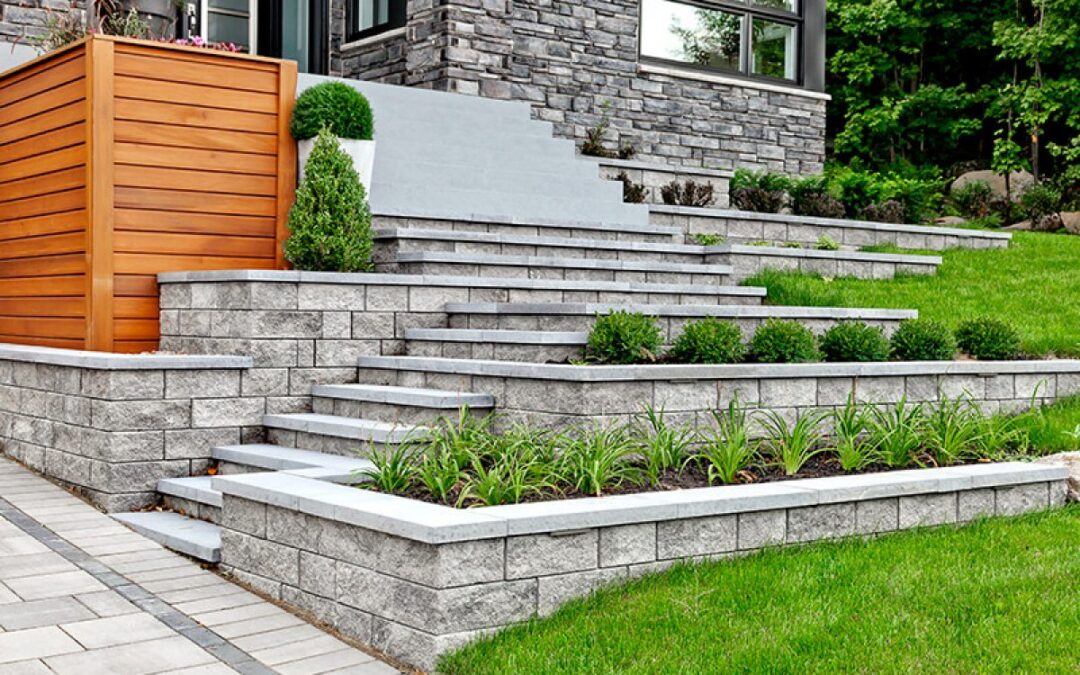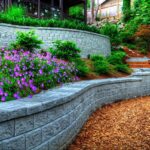What is a Retaining Wall: Definition
A retaining wall is a structure designed to hold back soil and prevent it from sliding or eroding away from an elevated area.
It is a critical infrastructure feature that is used to retain soil at two different elevations, created by cut and fill, by retaining the soil laterally and resisting the lateral loads that are applied by earth pressure.
The wall is designed to resist the lateral pressure of the soil behind it, which can be caused by gravity, water, or other forces.
Retaining walls can be used in a variety of settings, from residential landscaping to large-scale infrastructure projects.
How Does a Retaining Wall Work?
Retaining walls work by resisting the lateral pressure exerted by soil or other materials behind them.
The wall is designed to transfer the weight of the soil and any other loads to a stable foundation below the wall.ç
This is achieved through a combination of the wall’s weight, the friction between the wall and the soil, and any reinforcement materials used in the wall’s construction, such as steel bars or geogrids.
The wall is typically sloped slightly back towards the soil it is retaining to increase stability and prevent the wall from overturning or sliding.
The wall’s design and construction must take into account factors such as soil type, water drainage, and the height and slope of the wall to ensure its stability and effectiveness.
You Should Also Read: What are the Advantages of Adding a Retaining Wall?
Materials Used in Retaining Walls
Retaining walls can be constructed from a variety of materials including concrete, stone, masonry units, timber, steel, and plastic mesh.
The choice of material will depend on the design requirements, the site conditions, and the aesthetic preferences of the owner.
Design Considerations
Designing a retaining wall requires careful consideration of several factors including the slope of the ground, the type of fill material, the lateral pressure exerted by the soil, the angle of repose, the ground elevation, and the surcharge load.
The design must also take into account the stability of the wall, the overturning forces, and the sliding forces.
Construction Process of Retaining Walls
The construction process for a retaining wall typically involves excavation of the site, preparation of the foundation, installation of the stem, placement of the backfill material, and construction of the coping or cap.
The type of retaining wall will determine the construction process.
For example, a gravity retaining wall relies on the weight of the wall to resist the lateral pressure of the soil, while an anchored retaining wall uses tiebacks or cable rods to provide additional support.
Related topic: 4 Basic Types of Retaining Walls Minnesota and Their Uses
Common Types of Retaining Walls
Retaining walls come in several common types, each with its own advantages and disadvantages.
Gravity walls rely on their own weight, cantilevered walls use a lever arm, sheet pile walls are driven into the ground, anchored walls use cables, gabion walls are filled with rocks, and reinforced soil walls use geogrids.
The choice of wall type depends on factors such as height, slope, soil type, and aesthetic and functional considerations.
Maintaining of Retaining Walls
Retaining walls are a long-term investment in your property, and proper maintenance is crucial to ensure their longevity.
Regular inspections can help identify any potential issues, such as cracks or bulges, before they become more significant problems.
Any damage should be repaired promptly to prevent further deterioration.
One of the essential maintenance tasks is to ensure that the drainage system is functioning correctly.
Poor drainage can cause water to accumulate behind the wall, which can lead to pressure buildup and eventual failure.
Regularly cleaning out the drainage system can prevent this from happening.
Another maintenance task is to remove any vegetation that grows on or near the wall.
Plants can cause damage to the wall by pushing against it or their roots growing into the wall. Regularly removing any vegetation can help prevent damage.
Related article: Landscape Drainage Problems In Minnesota, MN and Solutions
Landscaping with Retaining Walls
Retaining walls can be an excellent addition to any landscaping project.
They can be used to create different levels in the yard, which can be used for planting gardens or creating outdoor living spaces.
They can also be used to prevent erosion and to create a more stable foundation for fences.
When landscaping with retaining walls, it is essential to consider the materials used. Different materials have different maintenance requirements and lifespans.
For example, timber walls require regular maintenance to prevent rot and insect damage, while concrete walls are more durable and require less maintenance.
It is also important to consider the placement of the retaining wall.
The wall should be placed in a location that provides adequate drainage and does not interfere with any underground utilities.
Proper placement can help ensure the longevity of the wall and prevent any potential issues.









